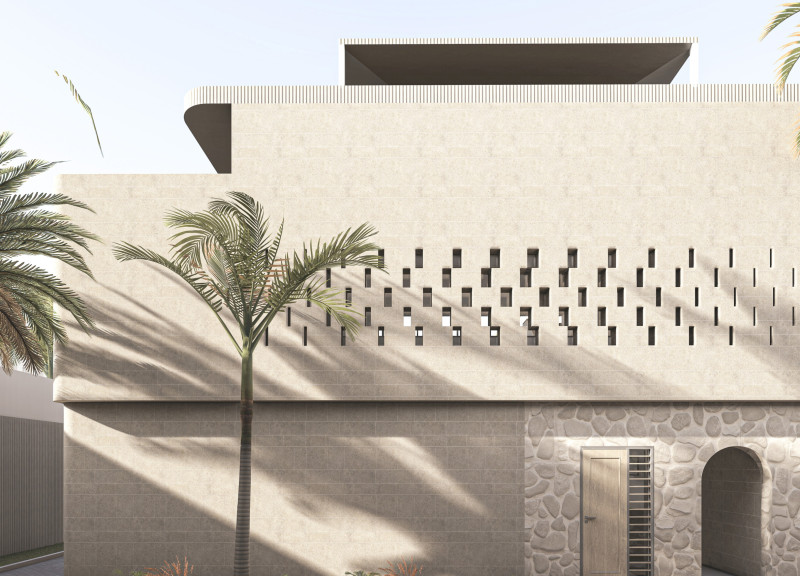5 key facts about this project
At its core, this architecture project represents a synthesis of practical innovation and artistic expression. It is designed with a purpose that extends beyond mere shelter; it encapsulates the essence of contemporary living, promoting interaction, comfort, and well-being among its inhabitants. The building’s layout is meticulously organized to facilitate various activities, ensuring that each area serves a specific function while maintaining a fluid connection with adjacent spaces. This approach fosters a sense of community and encourages collaboration.
The architectural design features a harmonious blend of materials that enhances both its functionality and visual impact. Concrete serves as the primary structural element, offering durability and a modern aesthetic. Large expanses of glass create a transparency that invites natural light into the interior spaces, fostering an open atmosphere while minimizing the need for artificial lighting during the day. The use of wood accents throughout the project introduces warmth, balancing the coolness of the concrete and glass. Steel elements add structural integrity and a sleek appearance, playing a crucial role in the design's overall framework.
Attention to detail is evident in various aspects of the project. The exterior facades are carefully articulated to reflect the building’s purpose and the character of the surrounding streetscape. The thoughtful integration of outdoor spaces encourages outdoor activities and enhances the overall user experience. Landscaped areas surrounding the building not only contribute to its aesthetic value but also promote biodiversity and provide necessary green relief in an urban setting.
Unique design approaches distinguish this architecture project from typical constructions. The architect has seamlessly incorporated sustainability into the design ethos, ensuring that the building is energy-efficient and environmentally responsible. Features such as green roofs and rainwater harvesting systems exemplify a commitment to reducing the ecological footprint while enhancing the building's functionality. Furthermore, passive design strategies optimize thermal performance, maintaining comfortable indoor temperatures throughout varying seasons.
The interior spaces are designed with a focus on adaptability. Movable partitions allow for flexible reconfiguration, enabling the space to cater to different functions, whether collaborative work environments, social gatherings, or quiet areas for reflection. This adaptability is a hallmark of modern architecture, aligning with the evolving needs of users in a rapidly changing world.
Throughout the project, there is a clear intention to foster connections between the building and its context. The strategic placement of windows not only frames scenic outdoor views but also encourages a dialogue with the surrounding urban fabric. This emphasis on connectivity enhances the sense of belonging, inviting occupants and visitors alike to engage with the building and its environment.
For those interested in exploring this architecture project further, it is recommended to review the architectural plans and sections that illustrate the intricate details of the design. An examination of the architectural designs will offer deeper insights into the innovative approaches employed throughout the project. Engaging with the architectural ideas presented in this project can enrich understanding and appreciation of contemporary architectural practice, highlighting how thoughtful design can create meaningful spaces that resonate with their users.


























